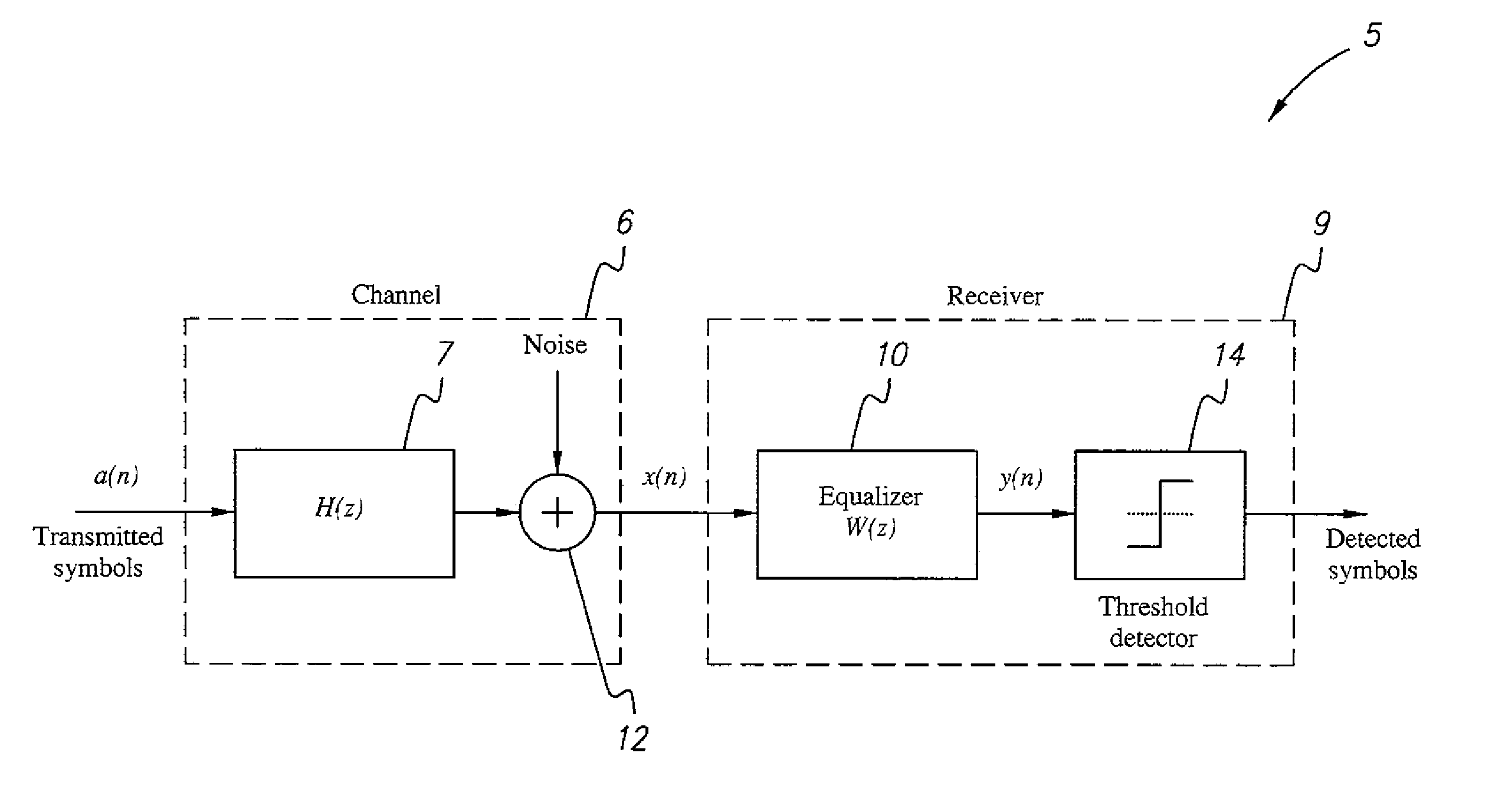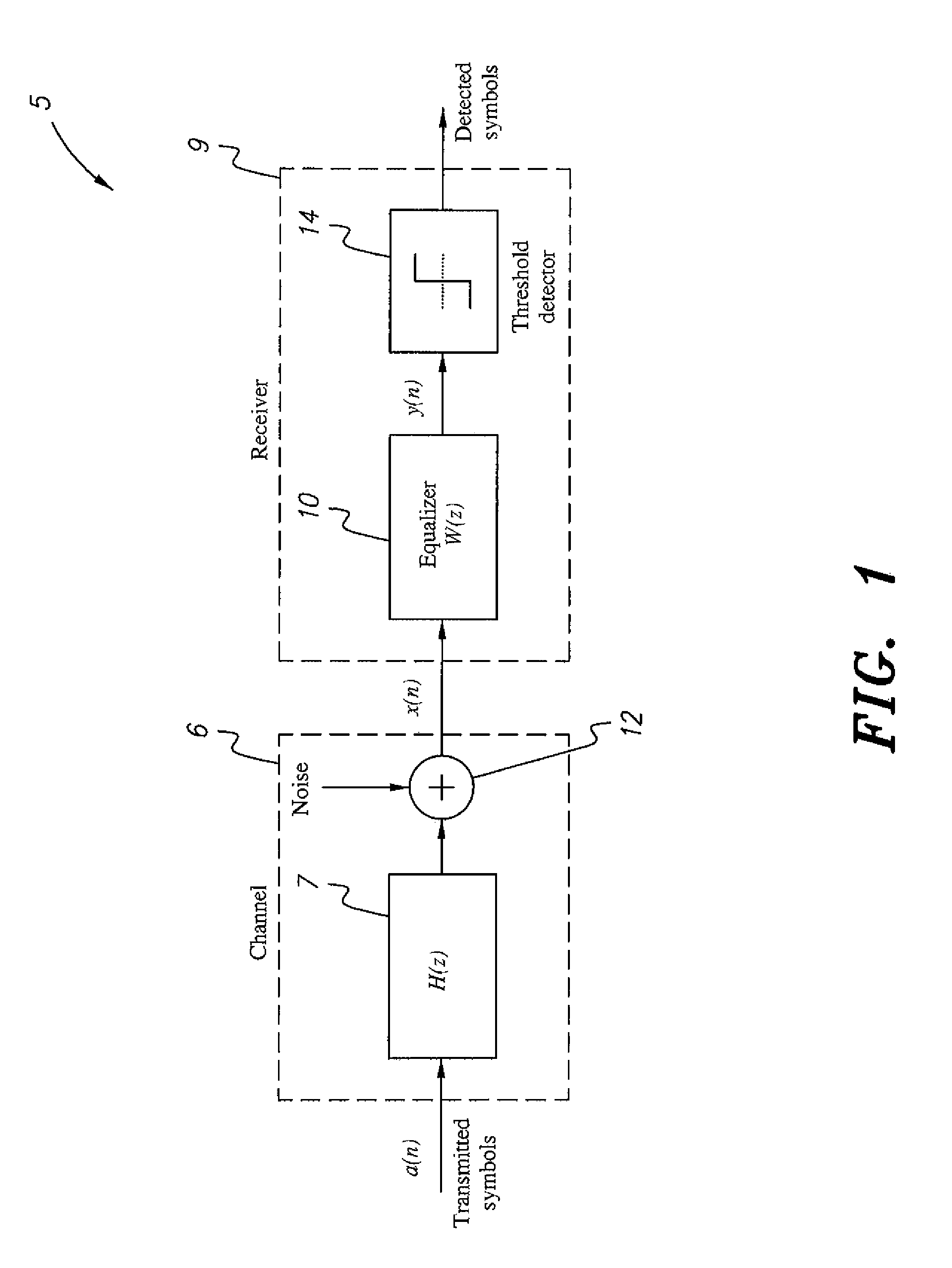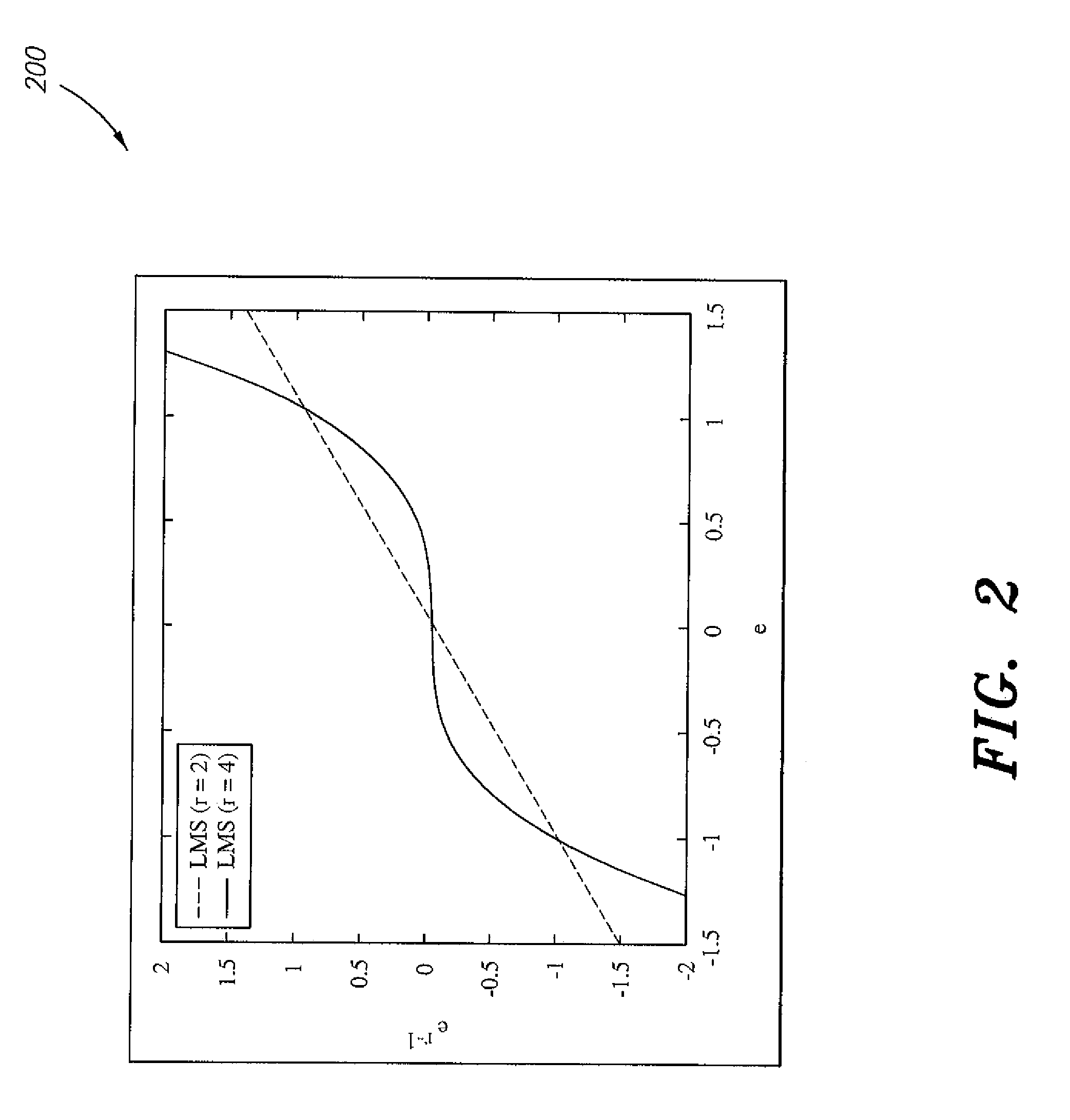Time-varying least-mean-fourth-based channel equalization method and system
a channel equalization and time-varying technology, applied in equalisers, electrical devices, transmission, etc., can solve the problem that the application of this algorithm in channel equalization has been little considered, and achieve the effect of superior receiver performan
- Summary
- Abstract
- Description
- Claims
- Application Information
AI Technical Summary
Benefits of technology
Problems solved by technology
Method used
Image
Examples
Embodiment Construction
[0018]The time-varying least-mean-fourth-based channel equalization method improves the performance of an adaptive filter where there is a time-varying channel in a CDMA system operating in a non-Gaussian environment. The performance of an adaptive filter depends not only on its structure, but also on the algorithm used to recursively update the filter weights that define the structure. A number of adaptive algorithms have been developed over the years for different purposes. Notable among these algorithms is the least-mean square (LMS) algorithm, which is most commonly used in practice. Variants of the LMS algorithm, each of which serves to either improve performance or simplify implementation, have also appeared in subsequent years. Some of these variants have been applied to adaptive equalization. Despite its implementation simplicity, the LMS algorithm does not always converge desirably under non-Gaussian additive noise and when the input eigenvalue spread is large.
[0019]This ha...
PUM
 Login to View More
Login to View More Abstract
Description
Claims
Application Information
 Login to View More
Login to View More - R&D
- Intellectual Property
- Life Sciences
- Materials
- Tech Scout
- Unparalleled Data Quality
- Higher Quality Content
- 60% Fewer Hallucinations
Browse by: Latest US Patents, China's latest patents, Technical Efficacy Thesaurus, Application Domain, Technology Topic, Popular Technical Reports.
© 2025 PatSnap. All rights reserved.Legal|Privacy policy|Modern Slavery Act Transparency Statement|Sitemap|About US| Contact US: help@patsnap.com



